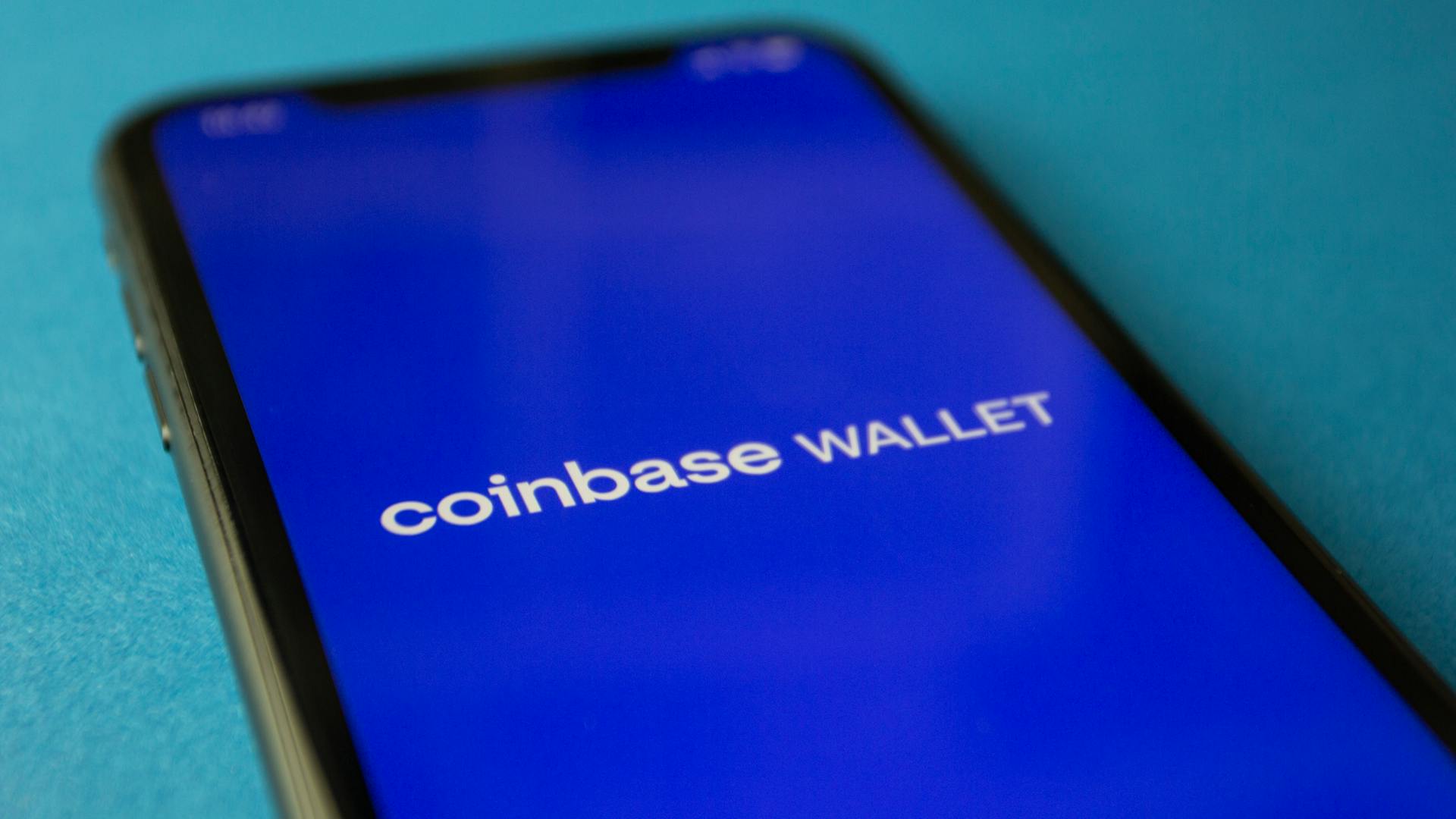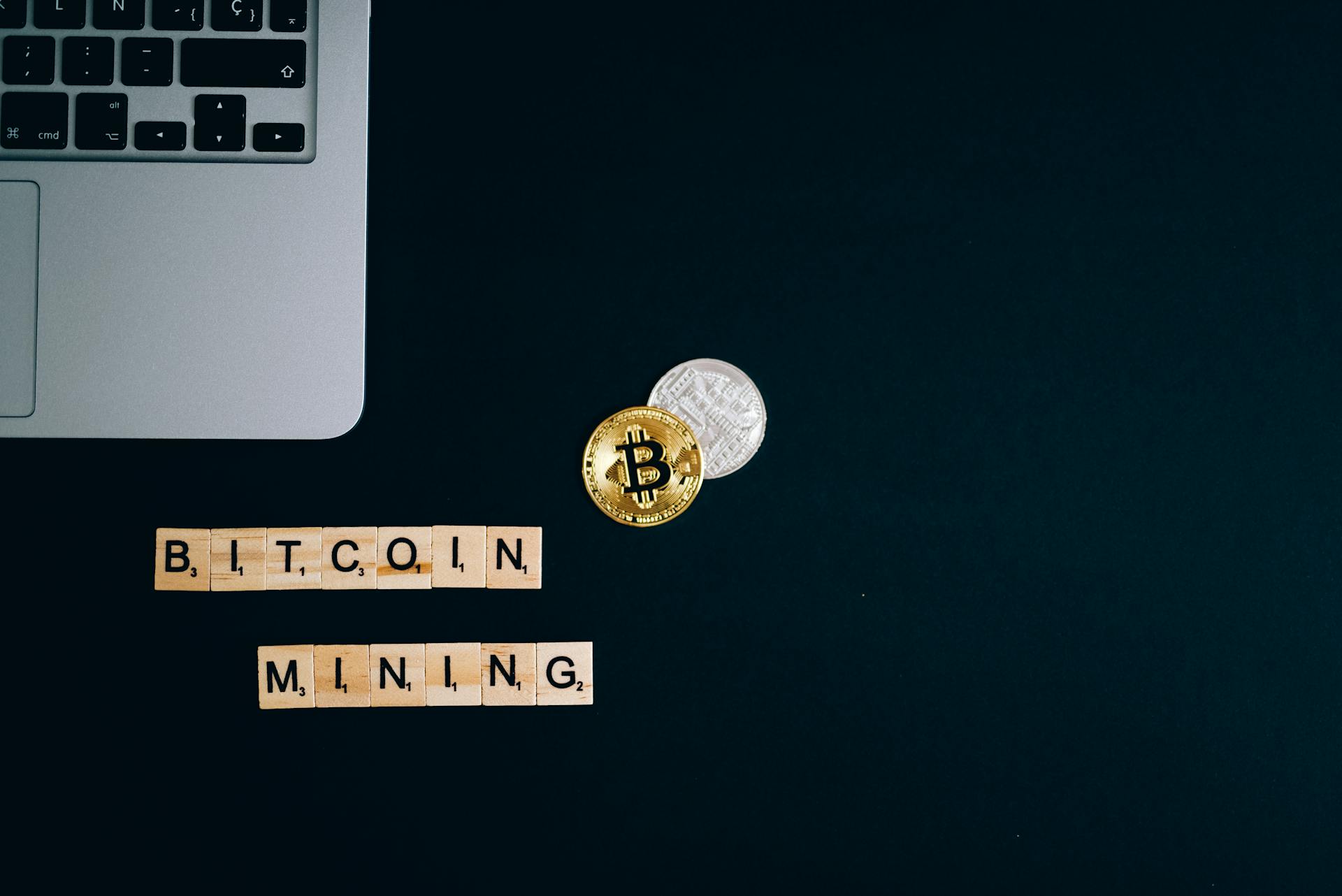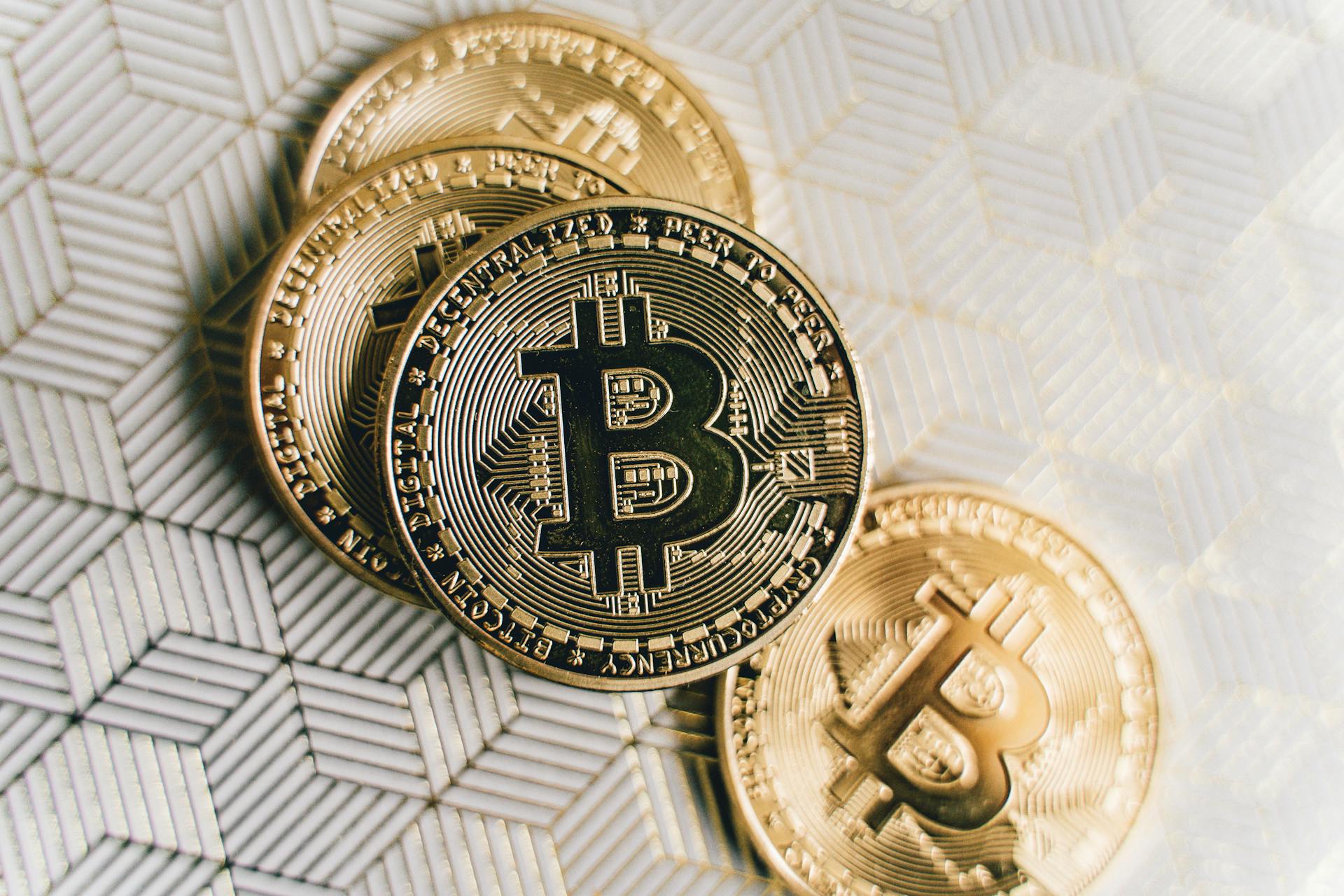
Fake Bitcoin wallets can be a real headache, but there's a way to avoid them. Be cautious of websites that claim to offer free Bitcoin or promise unusually high returns, as they're often scams.
Many fake Bitcoin wallets are created by hackers to steal your personal and financial information. They may look legitimate, but they're designed to trick you into revealing sensitive data.
To spot a fake Bitcoin wallet, look for red flags such as misspelled words, poor grammar, and low-quality design. These are common characteristics of phishing scams.
Here's an interesting read: Fake Account
What Is a Wallet?
A wallet is a digital or physical container that stores your cryptocurrency, including Bitcoin, and allows you to make transactions.
It's a secure way to manage your private keys, which are like a secret password that gives you access to your funds.
A digital wallet can be accessed through a computer, mobile device, or even a hardware device.
You can think of it like a physical wallet, but instead of holding cash, it holds your cryptocurrency.
You might like: Bitcoin and Cryptocurrency
Digital wallets often use encryption to protect your private keys and keep your funds safe.
Some wallets also offer additional features, such as the ability to track your transactions or receive notifications when your balance changes.
Hardware wallets, on the other hand, are physical devices that store your private keys offline, making them even more secure.
They're often used by serious cryptocurrency investors who want to protect their assets from hackers and other cyber threats.
In the case of a fake Bitcoin wallet, the perpetrator creates a convincing digital wallet that looks and feels like a legitimate one, but it's actually a scam.
Discover more: Digital Wallet Benefits
Identifying Red Flags
The percentage of fraudulent transactions is very high, so it's essential to know what to look out for. Be cautious of scammers worldwide.
Inconsistencies in the user interface can be a red flag. Authentic wallets will have a polished, standardised appearance. Do not use the wallet if there are irregularities or strange requests for private information.
A fake crypto wallet's logo can be a giveaway, with scammers using incorrect designs for the coin they've supposedly transferred. This is a classic example of how scammers create a non-functioning wallet app to trick victims.
You can check the token's contract address against the official contract on a site like CoinMarketCap. If the address doesn't match, it's likely a scam or fake crypto.
A fresh viewpoint: Whats a Bitcoin Address
Red Flags
If you're using a Bitcoin wallet that asks for your login and password to access a private client area, it's likely a fake.
Fake Bitcoin wallets often have irregularities in their user interface, so check for a polished and standardized appearance. Be wary of strange requests for private information.
A fake wallet can be identified by searching its address online and finding it for sale on multiple sites. This is a classic red flag.
Legitimate cryptocurrency wallets have many downloads and positive reviews on reputable app stores. If an app has few downloads and negative reviews, proceed with caution.
If the token's logo looks off or doesn't match the official design, it could be a sign of a scam. Scammers often use incorrect designs to trick victims.
You can check the token's contract address against the official contract using a site like CoinMarketCap. If the addresses don't match, it's likely a fake crypto.
Getting from Sources
Only download wallet software from official websites or reliable app shops, such as the App Store or Google Play. This is the best way to ensure you're getting the real deal.
Avoid third-party app shops, as they are frequently the source of viruses and phoney wallets. This is a common mistake that can lead to serious problems.
Verify that the website's URL corresponds to its official address, and make sure HTTPS connections are safe. This is a crucial step in protecting yourself from scams.
By following these simple steps, you can avoid getting caught up in a world of trouble.
Here's an interesting read: Cash App Bitcoin Scams 2023
App Store Reviews and Downloads

Reputable app shops will have many downloads, which is a good sign that the app is legitimate and popular.
If an app has many unfavourable reviews, it's a red flag that something might be off.
Verify that the app has a high number of downloads, as this indicates it's a well-known and trusted app.
A low number of downloads, on the other hand, could mean the app is new or not well-known, so proceed with caution.
Look for genuine, glowing reviews from multiple users to ensure the app is trustworthy and effective.
If the reviews are mostly negative, it's likely a sign that the app is fake or malicious.
Phishing and Social Engineering
Over 3.4 billion phishing emails are sent every day, making phishing schemes a frequent occurrence.
Scammers fabricate false websites that mimic reputable cryptocurrency exchanges or wallet providers to deceive users into entering their credentials.
These fake websites are often created to trick users into sending their money to fictitious wallet addresses, which are designed to look like legitimate wallet providers.
Scammers pose as support employees to obtain private keys and request "verification" from unsuspecting victims.
Be cautious of unsolicited messages, emails, or social media posts promoting crypto wallets or asking for your personal information.
Scammers often use phishing tactics to trick users into providing sensitive information or downloading fake wallet apps.
Scammer Tactics and Scams
Scammers create fake cryptocurrency wallet apps by imitating real ones, often using unofficial app stores or even respectable ones. These apps may appear to function similarly to real wallets, but are designed to steal users' private keys or login credentials.
Scammers employ classic fraud tactics to trick victims into using fake wallets, including phishing websites that mimic real crypto exchanges or wallet services. They also use social engineering techniques, such as impersonating customer support representatives or trusted figures within the cryptocurrency community.
Scammers often use fake wallet generator tools to create seemingly valid wallet addresses, which are actually controlled by the scammers. Victims who use these addresses unknowingly allow fraudsters to access any funds sent to those addresses.
Worth a look: Como Usar Bitcoins
Here are some common tactics used by scammers to create fake crypto wallets:
Scammers also use fake wallet generator tools to create seemingly valid wallet addresses, which are actually controlled by the scammers.
Phases of a Scam
Scammers use various tactics to deceive their victims, and understanding these phases can help you avoid falling prey to their schemes.
Scammers create fake cryptocurrency wallet platforms or apps that mimic legitimate ones, often using similar domain names, logos, and user interfaces to appear authentic.
They promote their fake wallets through social media, online forums, phishing emails, and paid ads, using enticing offers or outlandish promises to attract users.
To sign up for the fake wallet, users are directed to create an account, which collects their personal information, including their private keys or account credentials.
Scammers offer incentives or bonuses to entice users to deposit large amounts of cryptocurrency into the fake wallet.
Here are the phases of a scam:
- Create a fake wallet platform or app.
- Promote the fake wallet through various channels.
- Collect personal information from users.
- Encourage users to deposit cryptocurrency.
- Steal the deposited funds.
- Shut down the fake wallet platform.
Once the scammers have stolen the funds they want or start attracting suspicion, they shut down the fake wallet platform and disappear altogether, leaving victims with no way to trace them or recover their stolen funds.
How Scams Work
Scammers create fake crypto wallets by imitating real ones, often using similar domain names, logos, and user interfaces to appear authentic. They may also hide fake wallets inside legitimate applications and services.
To trick victims into using these fake wallets, scammers use phishing websites that look like real crypto exchanges or wallet services. Once a victim enters their credentials or private keys, scammers capture them and have access to the victim's actual wallet.
Scammers also employ social engineering techniques, such as impersonating customer support representatives or trusted figures within the cryptocurrency community, to trick users into providing their wallet information willingly. They may use enticing offers or outlandish promises to lure users into trying the fake wallet.
Here are the common tactics used by scammers to create fake crypto wallets:
Scammers often shut down the fake wallet platform after stealing the funds they want or start attracting suspicion, leaving victims with no way to trace the scammers or recover stolen funds.
Scams on NFTs
Scams on NFTs can be just as sneaky as those on other forms of cryptocurrency. Fake wallet scams can work on NFTs just like they can with other forms of cryptocurrency.
NFTs themselves aren't stored in wallets, but some owners store digital contracts and access keys for their NFTs in wallets, making them vulnerable to theft. This is a common mistake that can be avoided with proper knowledge and precautions.
Fake wallet scams can be a serious threat to NFT owners, especially if they don't take the necessary steps to protect themselves. Always be cautious when interacting with unfamiliar wallets or websites.
Protecting Yourself
Legitimate wallets provide strong security features like 2FA and frequent upgrades. Inadequate security measures, such as missing these characteristics, are a severe warning flag. Adding or removing access to wallets of third parties is a red flag.
Always download wallets exclusively from their official websites or reputable app stores. Avoid third-party sources and never click on links in unsolicited emails or messages. This will help you avoid fake wallets that may contain malware.
To spot a fake crypto scam, look out for poorly designed websites and content with spelling mistakes. Be cautious of being directed towards a crypto platform by someone you've recently met online. Verify the domain name and check for inconsistencies in the user interface.
Keep Software Updated
Keeping your software updated is crucial to protect yourself from potential threats. Regularly update your operating system, web browser, and security software to ensure you have the latest security patches and updates.
Outdated software can leave you vulnerable to malware infections and exploits. According to Example 2, "Ensure your operating system, web browser, and security software are up to date with the latest security patches and updates."
Updating your crypto wallet apps is also essential to patch any vulnerabilities and protect against potential exploits or malware infections. This is particularly important if you're using a cryptocurrency wallet, as seen in Example 2.
Regular updates can help prevent security breaches and keep your sensitive information safe.
Consider reading: Software vs Hardware Wallet
Research Your Provider

Researching your crypto wallet provider is crucial to ensure your safety and security. Conduct thorough research on the developer or company behind the wallet.
Verify their reputation by checking reviews and ratings from other users. This will give you an idea of their credibility and trustworthiness. You can usually find this information on the official website or app store.
Only download wallet software from official websites or reliable app shops, such as the App Store or Google Play. Avoid third-party app shops, as they are frequently the source of viruses and phoney wallets.
Verify that the website's URL corresponds to its official address, and make sure HTTPS connections are safe. This will ensure that you're downloading the real wallet and not a fake one.
Download crypto wallets directly from official sources, such as the official website of the wallet provider or reputable app stores. This is the safest way to get a wallet that you can trust.
Ways to Avoid Scams
To avoid scams, it's essential to download wallet software from official sources, such as the App Store or Google Play, and avoid third-party app shops, which are frequently the source of viruses and fake wallets.
Verify that the website's URL corresponds to its official address and ensure HTTPS connections are safe.
Only download crypto wallets directly from official sources, such as the official website of the wallet provider or reputable app stores like Google Play Store or Apple App Store.
Update your operating system, web browser, and security software regularly to ensure you have the latest security patches and updates.
Be cautious of phishing attempts and never share your private keys with anyone, even purported wallet support representatives.
Always double-check wallet addresses for sending or receiving and enable Two-Factor Authentication (2FA) to fortify your wallet's security.
Research and verify your wallet provider before using a crypto wallet or downloading a wallet app, and check for reviews and ratings from other users.
Here are some key things to look out for when trying to spot a fake crypto scam:
- Poorly designed websites and content with spelling mistakes
- Being directed towards a crypto platform by someone you've recently met online
- A recently registered domain name that may sound very similar to that of a legitimate crypto company
- The promise of high returns in a short space of time
- Pressure to keep investing increasingly large sums of money
- Someone offering to set up platform accounts and wallets on your behalf
By being aware of these red flags and taking the necessary precautions, you can significantly reduce your risk of falling victim to a crypto scam.
Testing New Features Safely
Testing new features safely is crucial to avoid potential risks.
Start by transferring a small amount of cryptocurrency to a new wallet, as this method allows you to test the wallet's security and operation without risking a sizable amount of money.
Make sure to keep an eye on the wallet's functionality and security measures before making greater deposits.
B2BINPAY ITALY S.R.L. emphasizes the importance of security, as they are regulated and authorized by Organismo Agenti e Mediatori for providing services related to the use of virtual currencies.
This means that B2BINPAY shall not be held liable in cases where errors occur in the client's account or unauthorized access to the account happens, if the client has transferred API data to third parties.
Keep your API data secure to avoid potential losses.
Remember, a stable user experience and strong security measures are essential for a secure wallet.
See what others are reading: New Bitcoins
How to Spot
If you're new to the world of cryptocurrency, spotting a fake Bitcoin wallet can be a daunting task. Scammers can create fake wallet apps that look remarkably similar to the real thing, making it difficult to distinguish between the two.
Fake crypto wallet apps often appear in unofficial app stores, and sometimes even in reputable ones. Users may unintentionally give up their passwords and private keys after downloading a fake app, leaving their cryptocurrency assets vulnerable to theft.
Here are some common signs that reveal potential scams:
- Ambiguity around the developer or company behind the wallet. Legitimate wallets are usually developed by well-known and reputable organizations with a history of providing secure cryptocurrency services.
- Long, deceptive, or unsecured URLs. Scammers often start their scheme through fake websites with URLs that closely resemble those of legitimate wallet providers.
- Suspicious ratings and reviews on wallets in app stores. Legitimate wallet apps typically have a large number of downloads, positive ratings, and authentic user reviews.
- Lack of options to set up two-factor authentication (2FA), biometric authentication, and hardware wallet integration. Legitimate crypto wallets prioritize security, often implementing and encouraging use of these advanced security features.
- Unsolicited messages, emails, or social media posts promoting a particular wallet. Avoid clicking on suspicious links or responding to unsolicited messages.
- Wallets only available for download from third-party, unverifiable websites.
These are just a few things to look out for when trying to spot a fake crypto wallet. By doing your research and being cautious, you can protect yourself from falling victim to scams.
Sources
- https://b2binpay.com/en/news/how-to-identify-the-fake-bitcoin-wallet
- https://www.coinlive.com/news/defending-your-crypto-beware-of-fake-bitcoin-wallet-scams
- https://walletrecovery.info/2021/02/15/stop-buying-fake-bitcoin-wallets/
- https://thecryptoadviser.co.uk/fake-bitcoin-wallet-app-crypto-balance-scams/
- https://www.datavisor.com/wiki/fake-cryptocurrency-wallet-scams/
Featured Images: pexels.com


